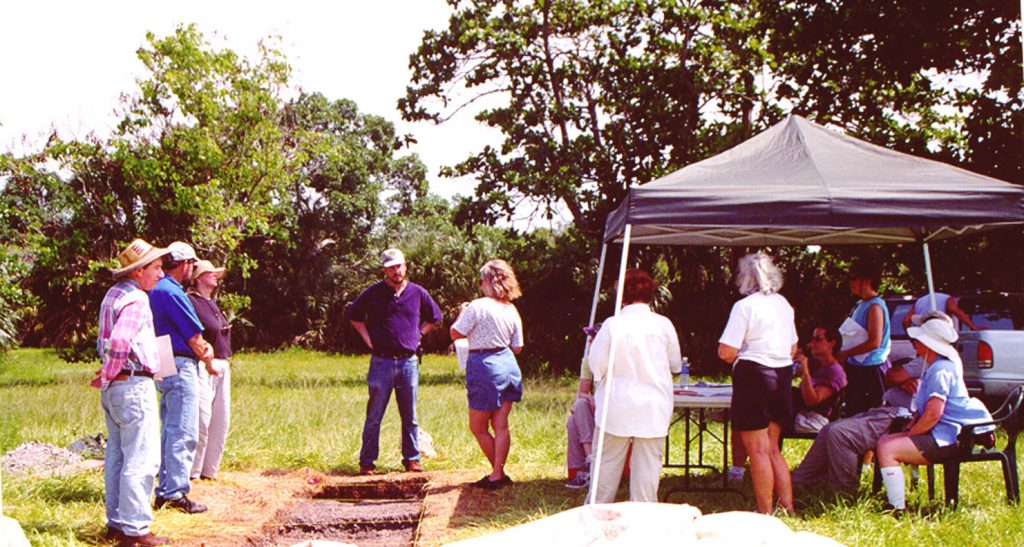On June 2 and 3, the RRC at Pineland hosted a visit by a remarkable array of specialists in archaeological sciences, all members of the RRC Research and Collections Committee, and all employed by or affiliated with the Florida Museum of Natural History in Gainesville.

Led by Committee Chair Dr. Karen Walker and RRC Director Dr. Bill Marquardt, the team spent a whirlwind 24 hours in Pineland, reviewing previous archaeological work at the site over the past 15 years, examining the open excavations and artifacts being recovered this spring, and meeting and interacting with local Advisory Board members and RRC volunteers. In addition to Drs. Walker and Marquardt, the visiting scientists included Ann Cordell, archaeological ceramic technology specialist; Dr. Kitty Emery, environmental archaeologist; Elise LeCompte, museum registrar and specialist in artifact conservation; George Luer, archaeologist and long-time investigator of Pineland; Irv Quitmyer, collections manager and specialist in zooarchaeology; Donna Ruhl, collections manager and specialist in archaeobotany; Sylvia Scudder, collections manager and specialist in archaeological soil science.
A focus of the team’s efforts was to get a first-hand look at the Surf Clam Ridge excavations being conducted by RRC Coordinator Dr. John Worth, and discuss various strategies and ideas about the fieldwork. Discussions centered on developing a sampling strategy that will permit simultaneous examination of questions regarding plant and animal remains, soils and sediments, and other important facets of the excavation. Following this visit, individual consultations with each scientist will be much easier and more productive.
This was the first opportunity for the Research and Collections Committee to become directly involved in the ongoing progress of renewed archaeological fieldwork at Pineland, and if the results of this visit are any guide, the process is working just as originally conceived. Pineland has always been a model of interdisciplinary collaboration in archaeology, and the June visit marks the successful continuation of that strategy.
This article was taken from the Friends of the Randell Research Center Newsletter Vol 2, No. 2. June 2003.